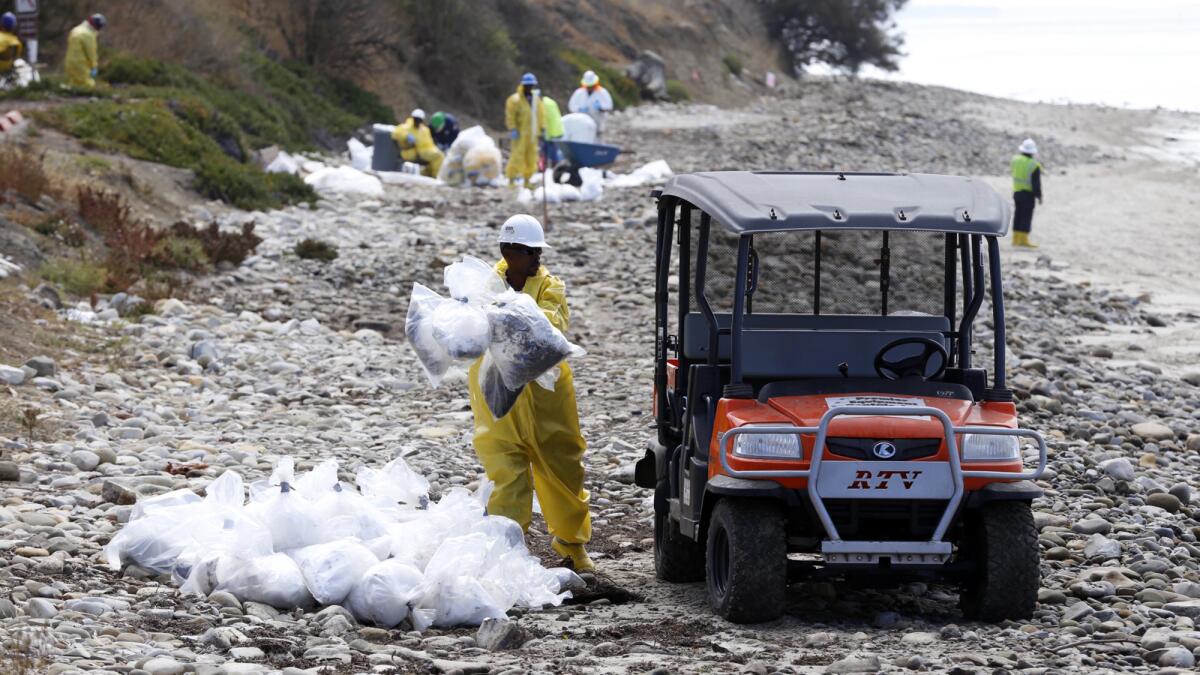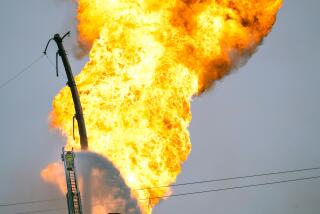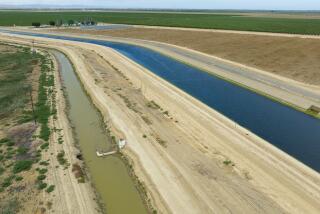Lawmakers seek answers about pipeline company’s ‘troubling’ safety record

Workers load debris from cleanup efforts at Refugio State Beach on Thursday, June 4, 2015.
A group of U.S. lawmakers is questioning the safety record of the pipeline company responsible for last month’s oil spill along the Santa Barbara coast.
In a letter Friday to Plains All American Pipeline Chief Executive Greg Armstrong, Sens. Barbara Boxer (D-Calif.), Dianne Feinstein (D-Calif.), Edward J. Markey (D-Mass.) and Rep. Lois Capps (D-Santa Barbara) asked the company to provide details about the company’s spill response plan and previous pipe inspection reports.
“Given the Refugio State Beach incident, as well as Plains Pipeline having committed over one hundred safety violations in the past decade and having to spend millions in penalties for damaging the environment, we find your prior safety record troubling,” the lawmakers wrote.
Mechanical failures on the company’s network have contributed to more than a dozen spills that have released nearly 2 million gallons of hazardous liquid in the U.S. and Canada since 2004, The Times reported Friday.
Companies controlled by Plains All American have also in the last decade reported to federal regulators 229 less-serious safety and maintenance incidents on pipelines.
A Plains spokesman said the company had received the letter and would respond to the lawmakers’ questions.
In the letter, the lawmakers expressed concern about preliminary findings by federal regulators that showed the failed pipeline had extensive corrosion. They were also concerned that federal regulators found inconsistent inspection reports from Plains.
The section of pipe that broke had worn down to 1/16 of an inch, and investigators found a 6-inch crack along the bottom of the pipe, according to preliminary findings from the federal Pipeline and Hazardous Materials Safety Administration.
At the location of the crack, the letter said, about 82% of the pipe’s wall had worn away compared to its original thickness when it was constructed between 1987 and 1990.
The lawmakers asked the company to explain why that level of corrosion was greater than what a Plains internal inspection of the pipe identified two weeks before the rupture. The company’s inspection indicated about 45% of the pipe wall had degraded. Plains officials said they did not receive those results until days after the pipe broke.
Those inconsistencies “raise questions about the safety of other pipelines” operated by Plains, the lawmakers said.
Between 45% and 74% of the pipe wall’s original thickness had been stripped away by corrosion at other locations along the pipe as well, regulators said.
Regulators have ordered Plains to examine a different, longer pipeline connected to the failed one. The longer pipeline has shown numerous signs of corrosion during three internal inspections in 2013 and 2014.
When the pipeline in Santa Barbara County broke, about 21,000 gallons of crude oil spilled down a culvert and into the Pacific Ocean near Refugio State Beach.
As of Friday, 123 dead birds and 65 dead marine mammals had been recovered from the spill area.
Follow @jpanzar
FULL COVERAGE: Oil spill in Santa Barbara County
More to Read
Sign up for Essential California
The most important California stories and recommendations in your inbox every morning.
You may occasionally receive promotional content from the Los Angeles Times.











